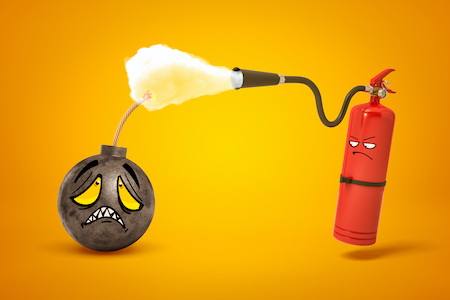Will This Recession Put Out the FIRE Movement?
Category: Financial and taxes in retirement
April 7, 2020 – The FIRE Movement, Financial Independence Retire Early, got a huge boost from the roaring stock market from 2019 through Feb. 2020. People who had been cutting way back on their expenses and investing that extra money saw their portfolios go way up. For that matter, anybody with a 401(k) or retirement portfolio was feeling pretty good. Many young people in their 40s and 30s even “hit their number”, quit their jobs and planned to live on their savings and non-traditional income sources, such as side gigs or rental income. Then the coronavirus hit, throwing a bucket of cold water on FIRE flames.
In just a few weeks during March stocks were down as much 40%. While that would not be fatal for a person with 20 or more working years or who did not have a big equity position, it would be devastating for someone who based their retirement on a booming stock market. Not only would they have less money to take out of their portfolio to live on each year, but they also wouldn’t have the steady income of a job to help them rebuild those savings. What’s more, studies show that the longer someone is out of the job market, the harder it is for someone with to yesterday’s skills to re-enter it. Folks who built their dream on renting out an Airbnb or rental property are probably seeing their revenues go to zero in 2020, while expenses continue.
Many proponents of the FIRE movement are not phased. Those who have chosen this path usually have cash reserves socked away so they don’t have to tap their equities or bonds in the short term. Their plans might have assumed a market correction and are built to weather it. Or, they have a backup plan to further cut living expenses for find a source of extra income.

LeanFIRE troubles
The early retirees who might be most negatively affected are those in LeanFIRE. The principle of FIRE is to save 25 times annual expenses, allowing a person to withdraw 4% per year and probably never run out of money. In LeanFIRE it is expected that the household will spend about $40,000 (the amount will vary on lifestyle and location), which is less money than the $60,000 a typical household relies on. Twenty five times $40,000 equals $1,000,000 – the “number” needed to start LeanFIRE. For the record, the regular FIRE required amount is $1.5 million to fund typical spending.

To illustrate the problem of a prolonged market downturn, a 30% decline in a LeanFIRE retirement portfolio results in an annual drawdown of $28,000, a drastic reduction. If the person takes out more, it means future years will be even less. Of course, most retirees have some portfolio allocation, so a 30% stock market correction might only mean a 20% decline or so ($32,000).
Bottom line: FIRE is a very interesting concept with many believers. We hope that those who have taken its plunge weather it successfully. If you are in the movement or are thinking about it, what advice or experiences could you share in the Comments section below.






Comments on "Will This Recession Put Out the FIRE Movement?"